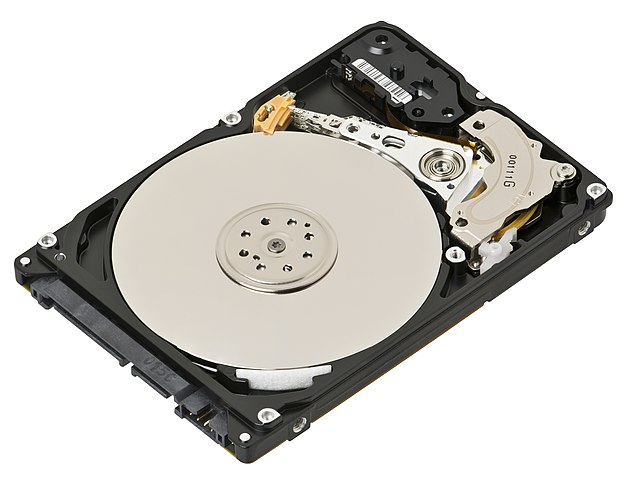8.1 Files and Other Persistent Storage
Persistence
- Data stored in memory disappears on power failure or reboot
- The OS should provide a way to store data longer term
Access
- Provide a means to reference stored objects by name
- Objects could also be accessed by contents
Files
- Blend persistence and access
Common access services
- Hierarchical directories mapping names to objects
- Indexes providing access based on contents
8.2 Storage Technology
- The recent history of persistent storage has been dominated by
spinning hard drives
- Solid-state drives have begun to replace spinning drives
Disk Drive
- Store data in 512 byte blobs called sectors (other sizes are
possible)
- Conceptually, an array of sectors
- The processor can request that an ordered group of sectors be
transferred to RAM or vice versa
![Disk drive hardware]() Disk drive hardware
Disk drive hardware
SSDs
- Do not experience mechanical seeks or rotational latency
- Less penalty for random reads
- Generally lower latency and high bandwidth than spinning drives
- Currently more expensive per byte
